
How to prepare your car for a trip? Be ready for any off-road scenario
Every car journey requires proper organization. However, the deeper into the wilderness you go, the more points are to check off. What do you need to take care of in your off-road vehicle before setting off? Keep reading and be ready for the road.
What opportunities does Off-road tours offer?
Off-road adventures are quite popular, mainly because they offer more diverse tourist experiences compared to camper trips. Of course, you can use a car for a trip, even for international vacations, but you’ll be traveling thousands of kilometers on main national roads and setting up camp in probably beautiful but predictable camping areas. Nice, but without much excitement.
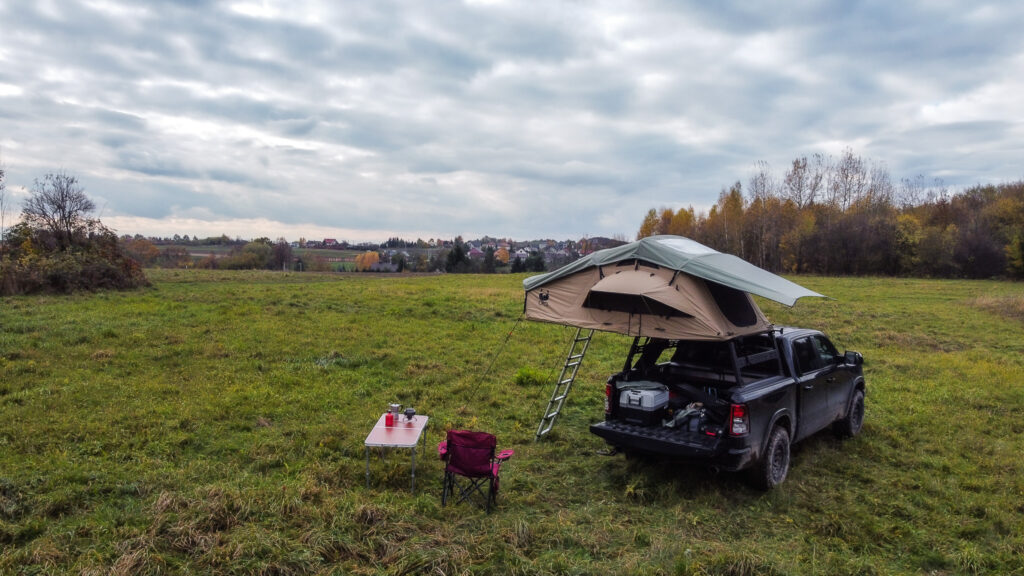
What’s more, overlanding or 4×4 journey, is a great way to discover. Imagine, for example, a trip by off-road vehicle through the rugged and mountainous terrain of Albania. We guarantee that driving several hundred meters above sea level will be an exciting experience. You’ll be amazed by spending the night under the starry sky on top of a mountain.
This type of travelling simply follows the most adventurous tourist dreams. It allows for rides even on extremely steep and rocky slopes, as well as sandy terrain and water areas.
Car for a trip – how to get your vehicle ready for an expedition
The first thing you need is the right car for a trip. Naturally, the best choice would be an off-road vehicle with 4×4 drive, which allows you to enter and to exit areas with muddy surfaces. You can read more about the technical parameters of off-road vehicles:
Read more
That’s not all. The specifications of an car for a trip should also include a few other essential points. So, before your lifetime journey begins, make sure your car is ready for off-road driving.
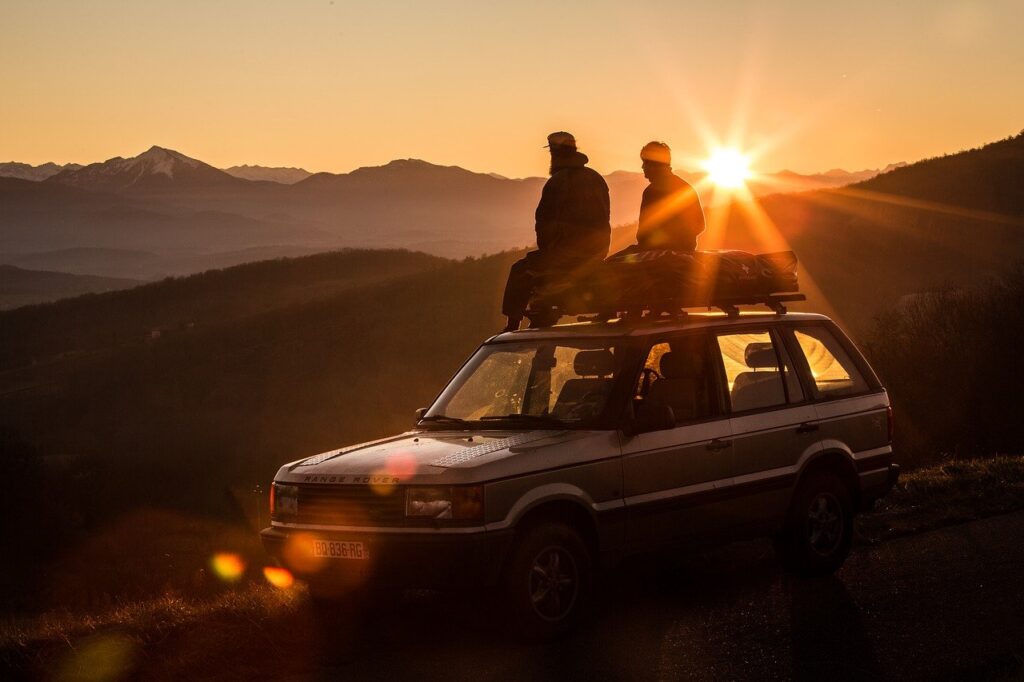
1. Availability of common spare parts
Traveling thousands of kilometers in overlanding is a significant challenge not only for you, but also for your car. Therefore, it’s wise to anticipate that breakdowns may happen along the way, even if it’s just a flat tire. If that’s the only problem you face, consider yourself lucky. It’s crucial to ensure that spare parts for your car for a trip are available in many countries or at least at your destination. Otherwise, you could find yourself in a very difficult situation.
2. Trunk capacity and payload
Usually, the longer the trip, the more essential items you need to bring. That’s why the car for a trip you’ll be driving must have a large payload and a spacious trunk. Do you know the maximum values of these parameters for your off-road vehicle? If not, catch up quickly, because the car’s weight affects its driving conditions, and exceeding it can be dangerous for both the car and you.
What’s more, the maximum load also lowers the car, which affects its off-road potential. You can add a few kilograms to the payload by replacing the suspension coil springs with stiffer and more closely coiled ones. Then, you can fold down the rear seat and add a roof rack. This allows you to comfortably pack more luggage.
Roof rack and bed rack
Related articles
3. “Low” fuel consumption
It’s simple and obvious: reducing fuel costs is preferable, as it’s not one of the cheapest pleasures. Especially with additional load, we should expect a higher fuel consumption rate. On average, an additional 50 kg of load increases fuel consumption by about 2%.
When it comes to off-road vehicles, engine characteristics are what truly matter. A larger engine capacity often leads to better fuel economy, thanks to increased power. Higher power enables smoother movement on demanding terrain and under extra load. However, this isn’t an absolute rule, especially in the era of third generation turbochargers. Additionally, torque at low revs contributes to lower fuel costs while driving.
Anyway, in the least fuel-efficient off-road models, we can expect fuel consumption of over 10 liters per 100 kilometers.
4. Higher clearance (lift) and tires
We’ve already mentioned the importance of suspensions lift and appropriate tires for off-roading. Therefore, increasing clearance and using larger wheels are also crucial for 4×4 tours.
A two-inch lift increases the vehicle’s potential and minimizes the risk of damage or scraping underbody parts. It’s better to prevent damage than to repair it afterward. Especially when traveling in a foreign country where access to help is limited or difficult.
Suspension kit for overlanding
Larger and terrain-specific tires further enhance performance on the road. If you’re heading to hotter, sandy areas, AT-type tires work well. They are also a good choice for moving a lot on paved surfaces. This type of tire is definitely quieter on the road, thus increasing driving comfort. For areas or seasons with higher humidity, MT tires are a better choice. Thanks to their high tread, they provide a better grip on wet, snowy, or muddy terrain, biting into it instead of sliding over.
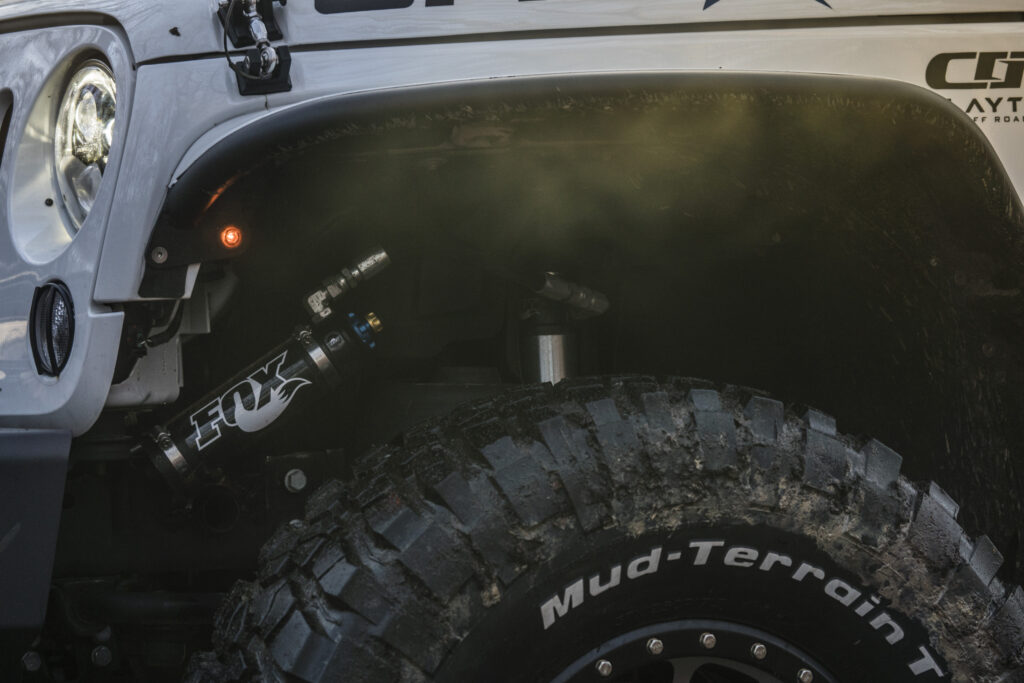
When you decide to replace the wheels along with the tires, select a model designed for off-roading. As you know, your expedition vehicle will carry additional weight, so aluminum rims are a practical choice. They are not only lighter than steel wheels but also more resistant to shocks, which are common on gravel roads.
Car for a trip – what to check in the vehicle before departure
When you’ve checked the car’s characteristics for overlanding, you need to properly prepare it for the long journey. Or rather, check if it’s ready for it. Before packing your backpack and starting the engine, you still have a few essential things to do. Without completing these tasks, you shouldn’t proceed any further.
5. Technical inspection of the vehicle
Regardless of when it was last done, make a vehicle inspection before any further car journey. Do it early enough to allow time for necessary repairs. Ensure the inspection is done comprehensively and thoroughly. It’s all about your safety in this case. Save on fuel, but not on your safety. Choose the mechanic wisely to check especially the suspension components carefully including shock absorbers and wheel geometry. Don’t forget about the braking system.
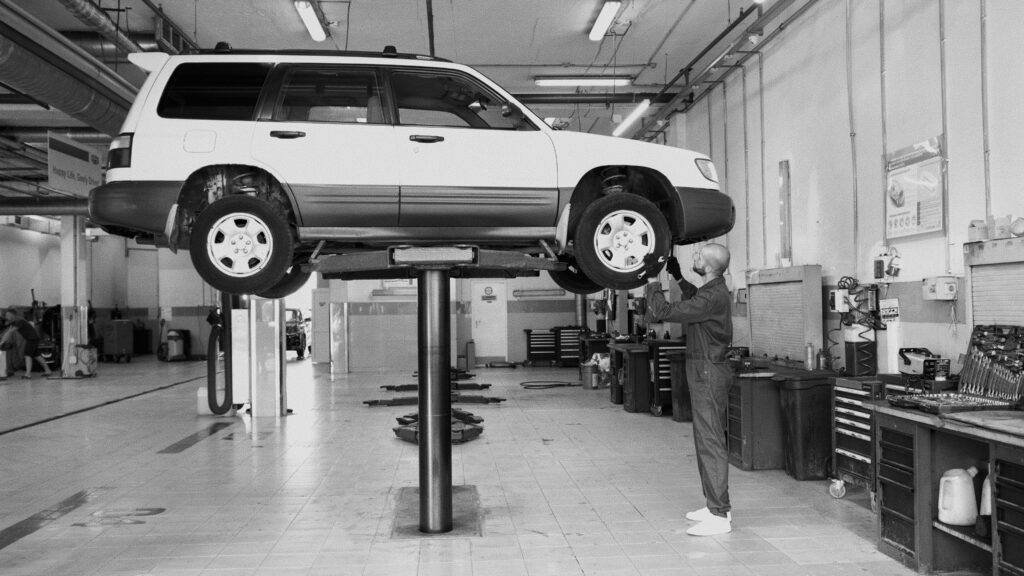
When preparing your off-road vehicle for overlanding, be prepared for all potential scenarios, even those far ahead. The fact that the car has been performing well in the city doesn’t mean it will do the same after traveling 10,000 km in the heat, on gravel roads, and under heavy loads.
6. Oil service and vehicle fluids
Did you know that the additional weight, high speeds, and demanding terrain can cause a decrease in oil grade? Furthermore, factors like mileage and driving style also affect its quality. So, how often should you change the oil during the trip? Normally, you should have changed the oil before adding another 15,000 km to the mileage. If you don’t perform regular service, it could lead to oil burning or breakdown of the oil film, resulting in higher engine operating temperature and reduced engine efficiency.
When you’re looking under the hood, also check the other fluids. This includes the most important one – coolant. If you own an off-road vehicle with a newer diesel engine, make sure to refill the AdBlue fluid as well. Another crucial fluid is the windshield washer fluid, often overlooked by many, but playing a significant role in off-roading. Limited visibility due to muddy and heavily dusty windows is a real danger, not just to yourself but also to other road users. For car for a trip like 4×4 vehicles, don’t forget about the differential oil as well.
7. Good visibility and lighting
Good visibility in off-road is one of the basic elements ensuring your safety on a 4×4 journey. That’s why, in addition to windshield washer fluid, good wipers are also important. Without them, you won’t be able to get rid of all the dirt accumulated on the windows while driving, which can lead to tragic consequences.
Car lighting kits
Extremely important for your visibility and safety on the road is also the vehicle’s lighting. It should be efficient and preferably upgraded. In the dark wilderness, an additional long-range LED lamp will certainly be useful, allowing you to spot potential dangers or obstacles on the road long before they become dangerously close. If you plan to use it on public roads, ensure they meet relevant certifications.
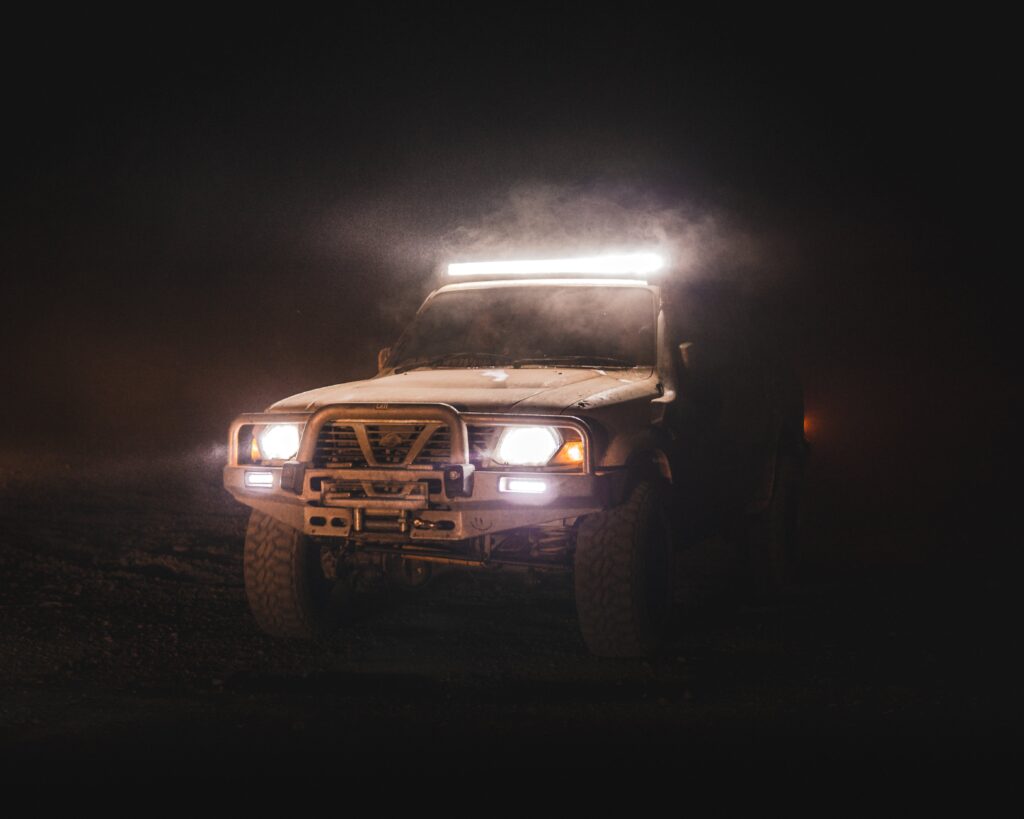
8. Battery condition
For a longer trip, you’ll likely need a whole set of additional electronic equipment. Therefore, a faultless and efficient battery is crucial not only for smooth travel but also for charging your smartphone and other devices. Be mindful of unnecessary battery drain to preserve its longevity.
Challenging conditions, whether in warm or icy environments, can strain batteries. Extreme temperatures affect battery self-discharge, so you can’t forget about regular recharging. Especially if you’re planning a longer stop or camping.
You can check the battery voltage level, for example, with a voltmeter. When you notice low battery voltage, disconnect unnecessary devices, such as the fridge, and connect an appropriate battery charger. For older types of battery, check the electrolyte level and refill it with distilled water if needed. Additionally, avoid long exposure of the car to direct sunlight, which can degrade battery performance.
9. Spare wheel and tire condition
We’ve already discussed wheels and types of tires. The only thing left before departure is to check their condition. Ensure you have a spare wheel in the car’s equipment. It’s an essential part, so it must be functional and ready to use. Check all the tires, including the spare, to ensure they are not worn out or outdated (any defects and cracks in the tire structure should be of concern). Verify pressure level and tread height.
4×4 accessories
What’s more, you’ll need a tire repair kit and a complete set of tools including a jack suitable for lifting higher vehicles. If you’ve upgraded to larger tires and wheels, consider relocating the spare wheel mount as the standard design is typically suited for factory-sized wheels.
10. Insurance
Remember how we said that on the road, you must predict every possible scenario, even the worst? Therefore, before setting off on a longer journey, especially abroad, check exactly what your car insurance covers and ensure its current validity.
Some insurers offer extended policies that provide assistance for various breakdowns, failures, or thefts regardless of location. An additional Assistance package may offer emergency accommodation, towing, and a replacement car outside the country and EU territory. If you opt for a standard version, you will need to look for help on your own.
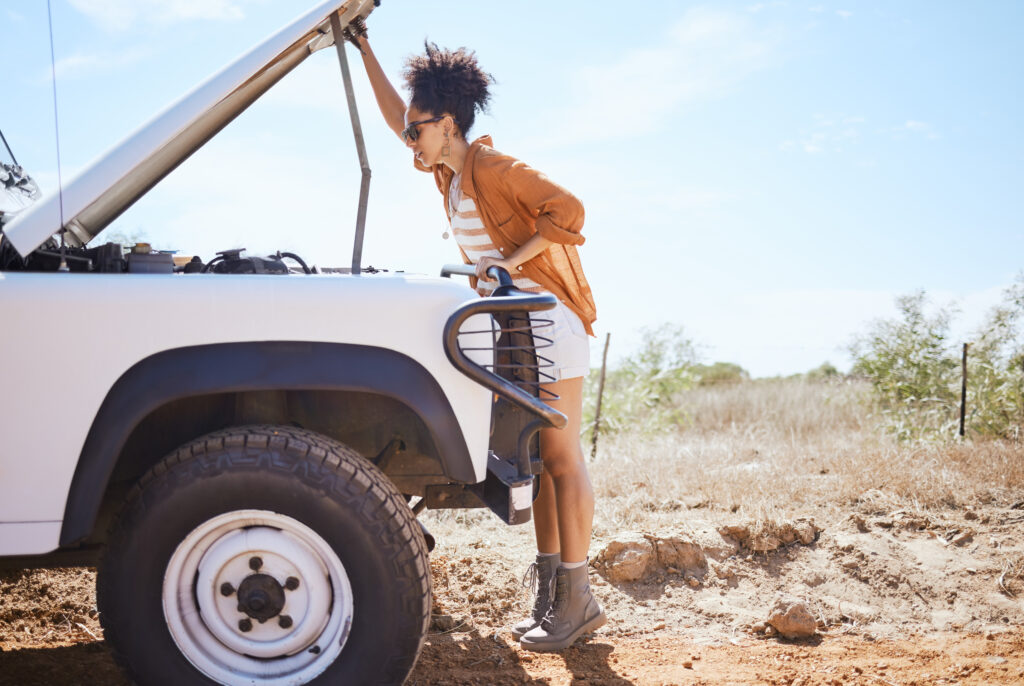
It’s also important to consider insurance coverage for yourself, fellow passengers, and any luggage or equipment, both inside and outside the car, such as awnings, tents, or bike racks. Keep in mind that travel insurance conditions may differ depending on the destination country and insurance company chosen. Moreover, if you plan to engage in other extreme sports during your off-road adventure, consider purchasing a policy that covers high-risk activities.
TL;DR or summary in list form i.e. in points on how to prepare your car for a trip
A list of essential points to check before a 4×4 expedition, concerning preparing your vehicle for overlanding.
- Ensure spare parts for your car are easily available in different countries.
- Check the payload capacity of your vehicle and consider it when choosing accessories and luggage.
- Replace the suspension springs with stiffer ones if the additional weight of the vehicle exceeds standard values.
- Choose a vehicle that is as fuel-efficient as possible.
- Consider increasing the vehicle’s clearance, even by 2”.
- Invest in wheels and off-road tires suitable for specific terrains.
- Perform a technical inspection of the vehicle with special attention to suspension and braking system.
- Service oil and operational fluids including engine oil, differential oil, coolant, AdBlue fluid, and windshield washer fluid.
- Check the wiper conditions.
- Ensure all headlights are working, consider investing in additional lighting.
- Check the battery condition and monitor it during the trip.
- Don’t forget about the spare wheel, consider mount relocation if you’ve upgraded to a larger wheel set.







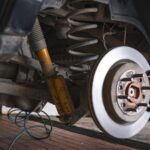












Comments ()